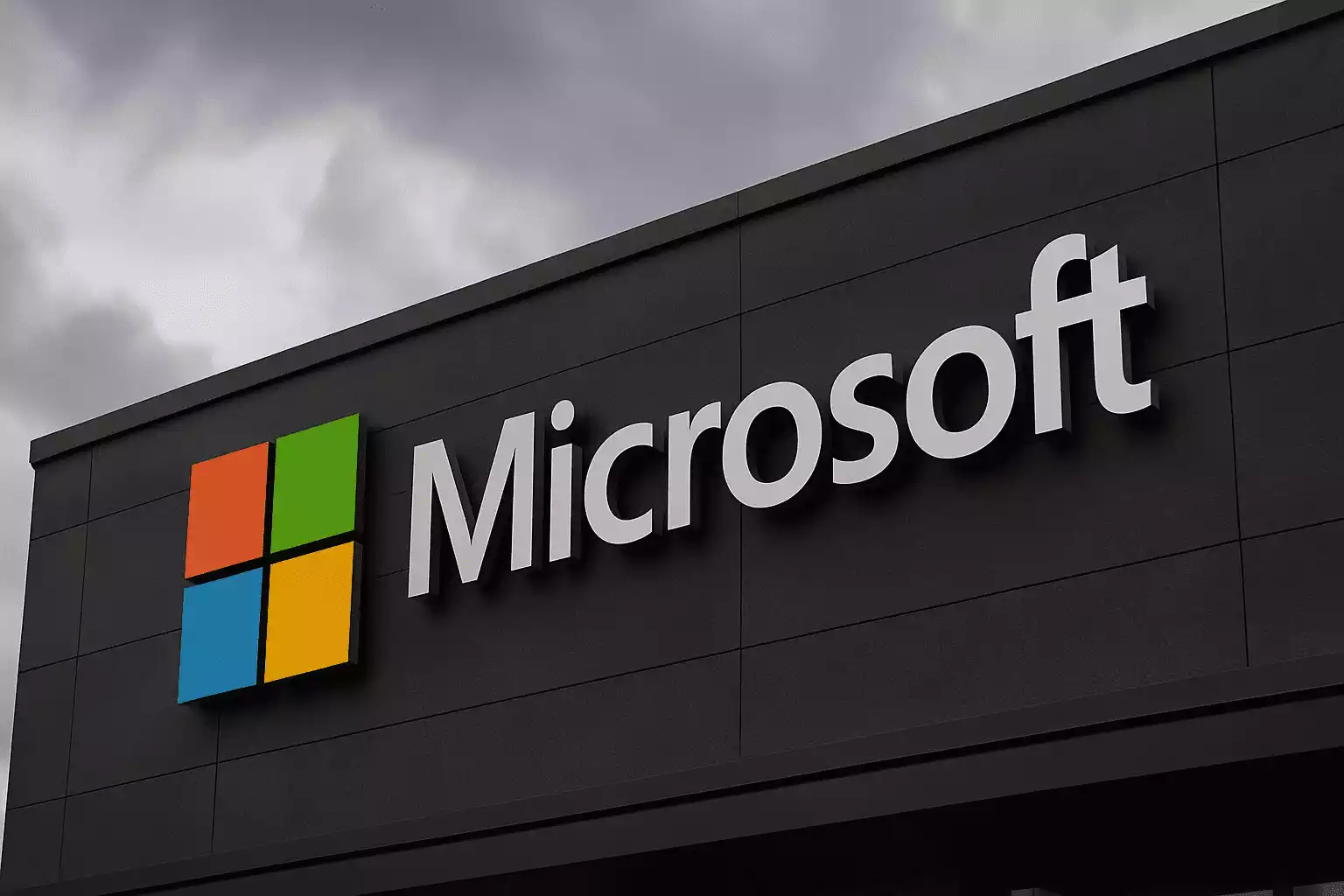Microsoft Layoffs 2025: What They Mean for Tech Jobs Around the Globe

Introduction
If you’ve been following tech news lately, you’ve seen the headlines: Microsoft Layoffs 2025. It’s a shake-up that’s sent ripples through the entire tech industry. But what exactly happened, why did it happen, and more importantly, what does this mean for tech workers worldwide?
Let’s take a closer look at everything using simple and easy-to-understand English.
The others are spread across the Asia-Pacific region and Latin America.
What Sparked the 2025 Microsoft Layoffs?
Microsoft cited “strategic realignment” and economic factors as the primary reasons. But let’s be real—this move comes on the heels of rising automation and AI integration. With tools like Copilot and Azure AI advancing fast, fewer human hands are needed for repetitive tasks.
They’re also cutting costs and rethinking how to stay lean in a highly competitive market.
How Many Jobs Were Affected?
A whopping 18,000 jobs globally. That’s not just a number—it’s families, dreams, and careers being upended.
- 10,000+ in the U.S.
- 3,000 in Europe
- Major technology centers such as Seattle, San Francisco, and Austin experienced significant effects.
Departments like customer support, software engineering, and marketing saw significant cuts.
Key Regions Impacted
United States
Major technology centers such as Seattle, San Francisco, and Austin experienced significant effects.
Europe
Hundreds of jobs were eliminated at Microsoft’s offices in Dublin and London
Asia
Offices in India and Singapore faced downsizing, particularly in administrative roles.
Roles That Took the Biggest Hit
Not all departments were hit equally. Some got hit hard.
- Customer support and service teams were slashed, and many were replaced with AI bots.
- Software testers and middle managers were deemed “redundant.”
- Even some senior engineers weren’t spared if their projects didn’t align with new priorities.
Microsoft’s Official Statement
CEO Satya Nadella mentioned, “These layoffs are a painful but necessary step to keep Microsoft agile and future-ready.”
He emphasized investments in cloud, AI, and cybersecurity. But didn’t offer much reassurance to the thousands now jobless.
Read Microsoft’s official press release here: Microsoft Newsroom
Employee Reactions and Insider Accounts
From LinkedIn updates to trending TikTok videos, emotions are genuine.
Many employees described being “blindsided”, receiving no prior warnings.
One former employee said,
“I gave ten years of my life to this company, and I was let go in a 5-minute Zoom call.”
Watch more reactions here:
📺 YouTube: Real Stories from Microsoft Layoffs
How This Reflects Broader Tech Trends
Microsoft isn’t alone.
- Amazon cut over 12,000 jobs.
- Google terminated the employment of thousands within its cloud and artificial intelligence sectors.
- Meta is freezing new hires.
Technology leaders are increasingly adopting artificial intelligence and automation, resulting in a reduction of human employment opportunities and a rise in the use of robots for various tasks
What This Means for Job Seekers
It’s not all doom and gloom, but the playing field has changed.
- Entry-level positions are fewer.
- The demand for specialist positions in artificial intelligence, cybersecurity, and data science is increasing.
- More freelance and contract-based work is emerging.
Survival Tips for Tech Professionals
Want to stay relevant? Here’s how:
✅ Upskill
Sign up for online courses through platforms such as Coursera or Udemy, where you can access a wide range of subjects and learn at your own pace
✅ Certify
Get industry-recognized certificates in:
- AWS / Azure
- AI / ML
- Cybersecurity
✅ Network
Join LinkedIn groups, attend virtual events, and stay active in tech communities.
✅ Personal Brand
Your LinkedIn profile is your new resume. Keep it polished and up-to-date.
Opportunities Hidden in Crisis
Layoffs often spark innovation.
- Many ex-Microsoft employees are launching startups.
- Others are exploring remote freelance opportunities on platforms like Toptal and Upwork.
Sometimes, losing a job opens new doors.
Global Impact on the Tech Ecosystem
These layoffs are creating a ripple effect:
- More outsourcing to countries with cheaper labor
- Remote-first models are becoming the new norm
- Smaller companies are grabbing top talent
The global redistribution of the tech talent pool is transforming the landscape.
What Competitors Are Doing
Focusing heavily on AI and sustainable tech. Minor layoffs, but big shifts in strategy.
Amazon
Doubling down on AWS and drone delivery, but trimming back in consumer retail.
Meta
Continuing to invest in the metaverse while reducing traditional application divisions.
Everyone’s adapting—but not always in the same way.
What’s Next for Microsoft?
Microsoft is already hinting at:
- More investment in AI
- Launching new tools via GitHub Copilot
- Expanding partnerships with OpenAI and Nvidia
They’re not slowing down—they’re shifting focus.
Conclusion
The Microsoft layoffs of 2025 represent more than mere statistics; they serve as a crucial alert for the entire technology sector. As automation takes the driver’s seat, we all need to rethink how we stay valuable, relevant, and future-proof.
Whether you’re an engineer, designer, or tech support agent, now’s the time to pivot, learn, and lead.
FAQs
1. Will there be more layoffs at Microsoft in 2025?
It’s possible. Microsoft hasn’t ruled out additional restructuring later this year.
2. What industries are safer than tech right now?
Healthcare tech, cybersecurity, and green energy are currently more stable.
3. How can laid-off tech workers get financial help?
Look into unemployment benefits, severance packages, and tech-specific grant programs.
4. Is it a good time to start a tech business?
Yes! With a surplus of talent and tools, it’s a prime moment for launching lean startups.
5. What roles are most in demand now?
AI engineers, cloud architects, cybersecurity analysts, and DevOps specialists are hot right now.



Eine gute Option für anonymes Chatten ist dieser Link.
For quick random chat, visit Uhmegle.
Best choice if you’re shy, use this chat.
If you’re tired of outdated designs, this site is refreshing. The layout is simple and works well on any device.
Good list of random chat sites at this blog.
Conocer gente nueva aquí: Uhmegle.
Random video chat can be tricky, but OmegleTV.tv never disappoints.
hgh vor oder nach dem training
References:
Hgh 4Iu Per Day Results (http://sorucevap.kodmerkezi.net/user/fuelport7)
Hey There. I found your weblog using msn. This is an extremely neatly written article. I’ll make sure to bookmark it and return to learn extra of your useful info. Thank you for the post. I’ll certainly comeback.
hgh kur wie lange
References:
hgh and testosterone stack cycle (http://anantsoch.com/members/walrusjaguar2/activity/1570279/)
how long should i take hgh
References:
hgh dose for fat loss [https://md.chaosdorf.de/s-oiF65cR5OuAwwx4OztUQ/]
hgh and testosterone stack
References:
https://www.giveawayoftheday.com/forums/profile/1093231
bodybuilding hgh
References:
https://writeablog.net/larkinconnor2281/sth-slang-bedeutung-und-beispiele
wachstumshormone hgh vorher nachher
References:
https://maldonado-buch-2.blogbright.net/wachstumshormon-hgh-and-peptide-kaufen-sie-legale-hgh-in-deutschland
I wish to express some thanks to you for bailing me out of this setting. Just after looking out throughout the internet and coming across proposals which were not beneficial, I believed my life was over. Living without the presence of answers to the problems you have resolved by means of your entire website is a crucial case, as well as the kind which could have adversely affected my entire career if I hadn’t encountered your blog. Your own understanding and kindness in taking care of every aspect was helpful. I’m not sure what I would have done if I hadn’t discovered such a step like this. I can at this moment relish my future. Thanks very much for the expert and effective guide. I won’t be reluctant to propose your web sites to any person who needs tips on this problem.
Thank you for another informative blog. Where else could I get that type of info written in such an ideal way? I have a project that I’m just now working on, and I have been on the look out for such information.
I haven?¦t checked in here for some time as I thought it was getting boring, but the last several posts are great quality so I guess I?¦ll add you back to my daily bloglist. You deserve it my friend 🙂
you have a great blog here! would you like to make some invite posts on my blog?
What a stuff of un-ambiguity and preserveness of precious knowledge on the topic of unpredicted feelings.
independent escort girl in Brasilia
It’s really a nice and useful piece of info. I am glad that you shared this helpful information with us. Please keep us up to date like this. Thanks for sharing.
Vấn đề bảo mật luôn được thương hiệu quan tâm và đặt lên hàng đầu. Hội viên khi tham gia sẽ không cần phải lo lắng về vấn đề thông tin cá nhân quan trọng bị rò rỉ hoặc xâm nhập trái phép từ bên ngoài. 888slot apk Đăng Nhập không chỉ thiết lập một loạt chính sách quan trọng mà còn cung cấp tính năng mã hóa bảo vệ đa lớp cùng hệ thống tường lửa thép đặc biệt. TONY12-19
Yo, just grabbed the Lotus365 app! Download was smooth, no dramas. Seems like a decent platform for a bit of fun. Check it out here: lotus365appdownload